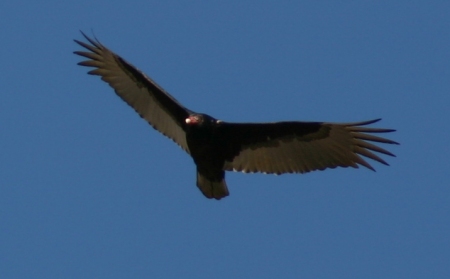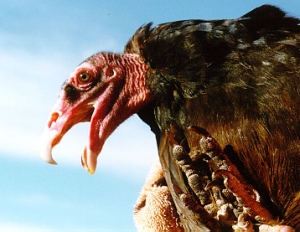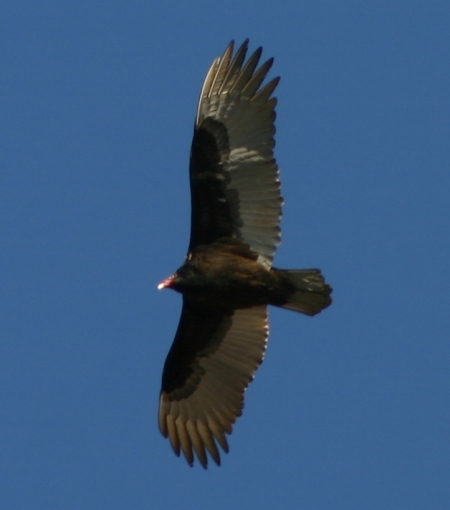|
|
|
||||||



|
Throughout much of this country we see them circling, lazily riding the warm-air updrafts.  Mary's Rock in Shenandoah National Park is one place that these thermals occur frequently. Graceful, almost aetherial. But naked-headed and wattled, hopping on the ground to greedily tear strips of carrion from road kill, they seem somewhat less appealing.
Vultures. Rolf Gubler, Biologist for the Shenandoah National Park, tells us there are two kinds of vulture around here. One is the Turkey Vulture and the other is the Black Vulture. About twice as many Turkey Vultures as Black Vultures are found in the park. To distinguish between them in the air, look for the white tips of the Black Vulture's wings. The Black Vulture also has a more compact look, while the Turkey Vulture is generally larger and is longer in proportion, and wider-winged. The Black Vulture is more predatory and aggressive. Local areas in Northern Virginia and near Radford have had problems with them. They are known to attack young calves and baby sheep, attacking the animal as a group, first pecking out the eyes and then ripping at the flesh.  But the Turkey Vulture is more docile, content with scavenging to make a living. They'll visit the poultry farms in the Shenandoah Valley, grabbing what they can from the piles of debris (dead poultry), and eating feed in storage. And there's a Turkey Vulture Society to watch out for their interests.  But the main benefit, says biologist Gubler (aside from just watching them soar) is that they do a useful service by promptly removing road kill. Filling a valuable ecological niche." (Dave Sagarin, February 23, 2004) Editor's Note: Pictures at Mary's Rock Mountain by George Loper. See also, Big Meadows, Shenandoah National Park Re-Opens Additional Facilities, and High Winds, Grazing Deer and Fall Foliage. For more on Black Vultures in Virginia, see Beady-Eyed
Stinkers Feast on Urban Fringes.
|

